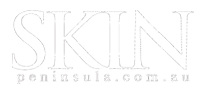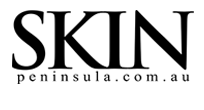Acne & Teenage Skin
It’s so important to start a skincare regime early, as how you care for your skin today will leave an everlasting impression….. and with today’s technology, acne and skin concerns of teenagers can be a thing of the past!
Acne can make an individual at any age feel insecure, suffer from a lack of confidence and self-love. When we have so many other stresses in our daily lives, our skin shouldn’t have to be one of them! There are a number of alternative laser acne treatment options available at Skin Peninsula that depend on the stage of acne and also particular skin types. Our most popular are Facials ,microdermabrasion, disencrustation, Peels, LED colour Light Therapy and IPL Photorejuvenation teamed with an individual homecare routine.
We’ve put together the below information based on the four main grades of acne along with our recommended treatments. Acknowledging and understanding the different stages is the first step on the journey to having blemish-free, clear and radiant skin!
Grade I Acne
Grade I acne is the mildest form of acne. There may be minor pimples but they will be small, appear only very occasionally, and in small numbers (one or two). Blackheads & milia (protein filled, small and raised, pearly-white bumps on the skin) will be found, sometimes in great numbers, but there is no inflammation associated with Grade I acne.
Grade I acne is commonly seen in early adolescence, especially in the nose and/or forehead. Many adults also experience Grade I acne, as blackheads on the nose and forehead. Milia are commonly found in the eye area and chin.
This type of acne can be successfully treated at home using appropriate skincare products, ideally containing salicylic acid and possibly retinol if required and prescribed. Results are seen generally pretty quickly. Treating acne at its early stages helps prevent acne from progressing and scarring, especially in teens. Grade I acne may progress to Grade II if left untreated.
Grade II Acne
Grade II is considered moderate acne. There will be blackheads and milia, generally in greater numbers. You will start seeing more papules and the formation of pustules in this stage. They will appear with greater frequency, and general breakout activity will be more obvious. Slight inflammation of the skin is now apparent.
In teens, you may see the acne progress from the nose and forehead to other areas of the face. Acne may start to affect the chest and shoulders, with occasional breakouts on the back, especially in males. Adult women may find greater breakout activity in the cheeks, chin, and jaw line area, especially just before and during the menstrual cycle.
Grade II acne may progress to Grade III, especially if pimples are habitually picked at or squeezed. Grade II acne can still be treated at home, but correction is best achieved with a combination of homecare and in-salon laser acne treatments.
Grade III Acne
This type of acne is considered severe. The main difference between Grade II and Grade III is the amount of inflammation present. The skin is now obviously reddened and inflamed. Papules and pustules have developed in greater numbers, and nodules will be present.
Grade III usually involves other body areas, such as the neck, chest, shoulders, and/or upper back, as well as the face. The chance of scarring becomes higher as the infection spreads and becomes deeper.
With the assistance of a Therapist, we recommend a Dermatologist should also assist in the treatment of acne at this stage. Grade III acne is usually treated with both topical and systemic therapies available only by prescription. Left untreated, Grade III acne may progress to Grade IV.
Grade IV Acne
The most serious form of acne, Grade IV is often referred to as “cystic acne”. The skin will display numerous papules, pustules, and nodules, in addition to cysts. There is a pronounced amount of inflammation and breakouts are severe. Cystic acne is very painful.
Acne of this severity usually extends beyond the face, and may affect the entire back, chest, shoulders, and upper arms. The infection is deep and widespread. Nearly all cystic acne sufferers develop scarring.
Grade IV acne MUST be treated by a dermatologist. It tends to be hard to control, and almost always requires powerful systemic medications in addition to topical treatments. Unfortunately, Therapists are unable to cater for treatments in this acne stage.
Time to treat!
We believe that educating and treating skin while teenages are going through hormonal changes can prevent future damage, scarring and ageing.
Below are some options for teenage skin. Each treatment will focus on education as much as the actual treatment, so you can walk away with the knowledge of how to look after your/your teenager’s skin at home.
Blemishes ? Clogged Complexion? Shiny skin? This treatment is perfect for you!
Acne Four step (for all ages)
Price $185 (save $40)
Full consultation
Disencrustation
Microdermabrasion
AHA/BHA maskings
LED blue light therapy
This combined treatment is the ultimate in immediate knockout results and the perfect solution to all acne concerns.
Clean me, clear me!
Price: $580 (save 185)
1 x disencrustation
4 x microdermabrasions
4 x AHA/BHA masks or enzyme peels
4 x LED Blue light
We take great pride in offering a total solution for all acne concerns, supporting all stages for our Mornington, Mount Eliza and Frankston clients.

